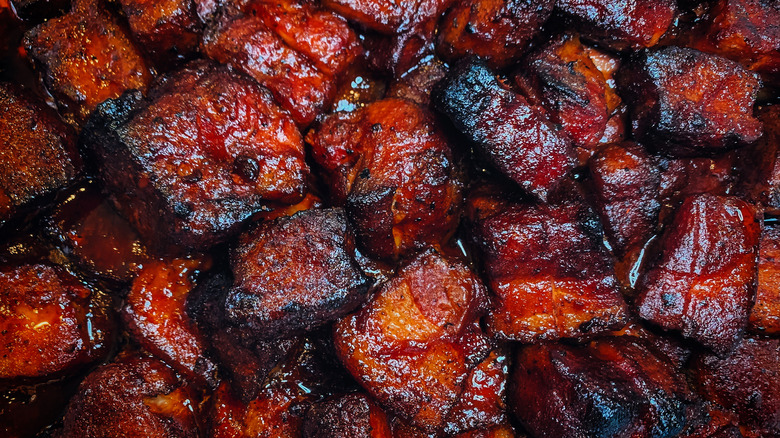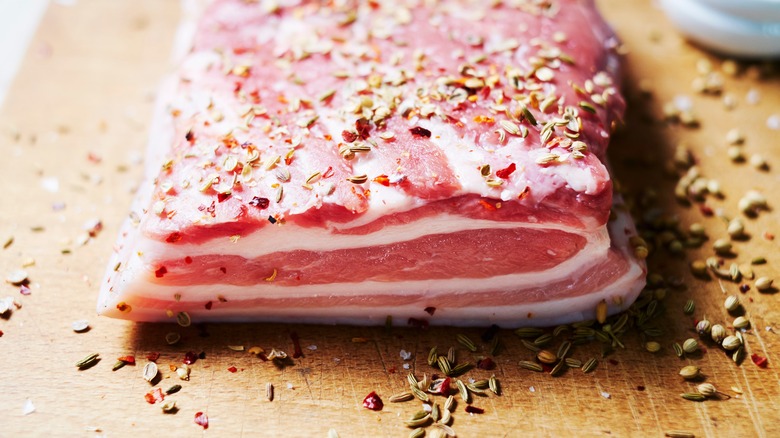The Reason You Should Never Make Burnt Ends With Any Cut Except Pork Belly
Burnt ends don't seem like the kind of food that you should be thinking too hard about — they did originate as scraps, after all. But there is actually a very specific alchemy that makes them work. Like the most browned crispy bits of skin on a roast chicken, the charred bark and fatty interior of burnt ends are the kind of bites so perfect and flavorful that chefs often sneak a bite for themselves before rolling out the rest of the meal to hungry diners.
Despite burnt ends originating as unwanted barbecue leftovers and scraps from the fattiest cuts of brisket at barbecue restaurants, they have become a separate dish in their own right, now made with pork belly as well as brisket. But the meat they are made from still needs to check the same boxes those brisket ends did to produce the perfect result. So Tasting Table reached out to an expert, Chris Stark, the director of culinary operations at Hill Country Barbecue Market, who will be at the City Harvest BID in New York on October 29, to ask why pork belly is the only cut you should be making burnt ends with.
Stark told us, "Pork belly truly stands alone in its balance of layered fat and protein." Coming from such a rich area of the pig, he says, "Even the 'lean' protein is well-marbled, leading to a more decadent mouth feel than other cuts of pork may offer." This balance is perfect for slow-cooked burnt ends.
Well-marbled pork belly burnt ends get tender where other pork cuts get tough
Pork belly burnt ends require hours of smoking or grilling to produce that mix of charred exterior and rich meat, which gradually breaks down the fat. Stark warns, "Cuts of pork with less intramuscular fat, like a shoulder or loin, may be able to give the appearance of a proper burnt end, but end up either chewier ... or too stew-like." He explained that the connective tissue in these cuts takes longer to break down, and that won't happen until well after the meat itself has cooked through. But even going longer with the cook times on these pork cuts presents a problem. As Stark noted, they can end up "cooked through to the point that connective tissue breaks down fully — really, we're just talking about pulled pork at this point."
Pork belly will never be mistaken for stew meat, and in this case, that's a good thing. You can even cube it before smoking or making pork belly burnt ends in the oven to get that ideal balance between crispy crust and tender meat, and it will still hold up to hours of cooking. Just make sure you stick to low and slow cooking to fully render the big hunks of fat, as pork belly itself can end up too chewy if undercooked. But devote the full time that any true smoked classic needs, and you'll be treated to one of the best experiences in barbecue.

